The game is thought to have originated in Great Britain in the late 19th century. Water polo arrived in Hungary around 1890 and immediately became one of the most popular forms of entertainment. Today it is a national Magyar sport and the frequent international matches have a sporting but also a political dimension.
Two teams of seven players each take part in a water polo game. Matches are played in a pool with a minimum depth of 180 centimetres and the playing field is 20 by 30 metres. The development of this sport in Hungary was first overseen by the Hungarian Swimming Federation and since 1989 by the Hungarian Water Polo Association (Magyar Vízilabda Szövetség, MVLSZ). More than 170 clubs are part of to the association . MVLSZ is a member of the International Swimming Federation and the European Swimming Association

Official logo of the XXXIVth European Water Polo Championship in Budapest
The 1st European Water Polo Championship was held in 1926 in Budapest. The Magyar won it and then won the gold medal four more times in a row. On top of that, between 1920 and 1939 they did not lose a single official match! Until 1999 the Hungarians were tycoons of the Old Continent, winning twelve times out of twenty-four tournaments played. Since then, however, there has been a crisis broken only on 26 January 2020, when the thirty-fourth European Water Polo Championship was played. It was the fifth time the Championship was held in Hungary. The host men's team won the gold medal, while qualifying for the 2020 Olympic Games in Tokyo. The women's team took third place in the tournament (they have won two gold medals in the European Championship).
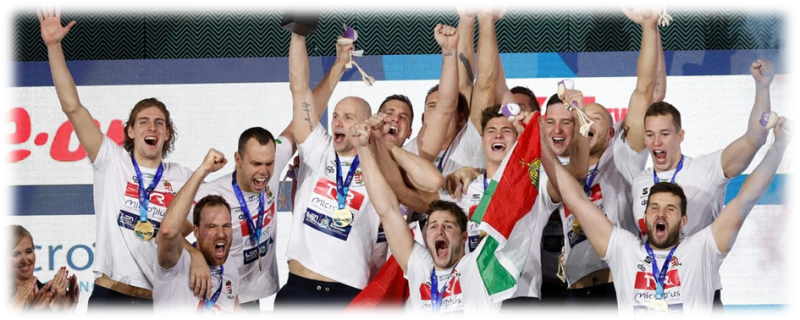
Hungarians won the gold medal at the European Championships after 21 years – Budapest 2020
Hungarians were equally successful during the World Championships. The men won three times (in the first WC in 1973 and in 2003 and 2013), while women won twice (in 1994 and 2005).
Water polo first appeared at the 1900 Olympic Games in Paris. Twelve years later, the Hungarian national team made its debut at the tournament at the Stockholm tournament, winning 4th and 6th places. Already in 1932, during the Los Angeles Summer Olympic Games, the Magyars won the gold medal. Since then, they have become absolute hegemons. Their total cache amounts to fifteen medals, including nine gold medals. Italians, second in the medal classification, won the tournament only four times.
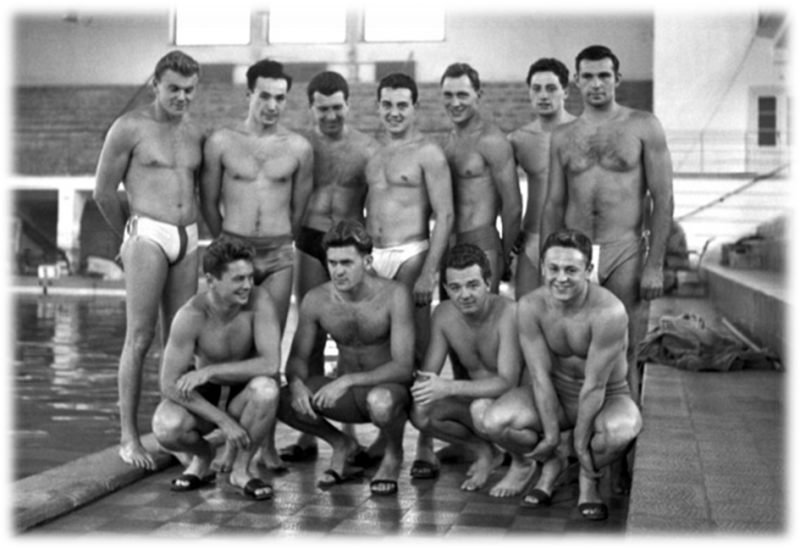
Budapest, 19 October 1956. Members of the Hungarian Summer Olympic Games water polo team. From the left: Tivadar Kanizsa, Kálmán Markovits, Dezsõ Gyarmati, Ervin Zádor, Antal Bolvári, Mihály Mayer, Ottó Boros. Bottom row: Miklós Martin, István Hevesi, László Jenei, György Kárpáti
The 1956 Games in Melbourne have become part of Hungarian sporting history. Two months before the start of the tournament, the anti-communist uprising began in Budapest on 23 October. At that time, the water polo players were at a preparatory camp near the capital. At the end of October one of the competitors – Ervin Zádor – slipped out of the camp unnoticed and went to his mother living in Budapest. On his return, he told the other players about what he saw. When the Red Army troops entered the city, the athletes were sent to Czechoslovakia, where they waited for their departure to Australia. Over two and a half thousand Hungarians died during the suppression of the uprising. The players learned about the tragedy of the events from English-language newspapers only after their arrival. Spain, the Netherlands and Switzerland did not send their players to the Games at all in opposition to the Soviet invasion. During the opening ceremony of the Olympics, the Hungarian team performed with black armbands on their arms. In the Olympic village, the team cut out communist symbols from the Hungarian flag with scissors.
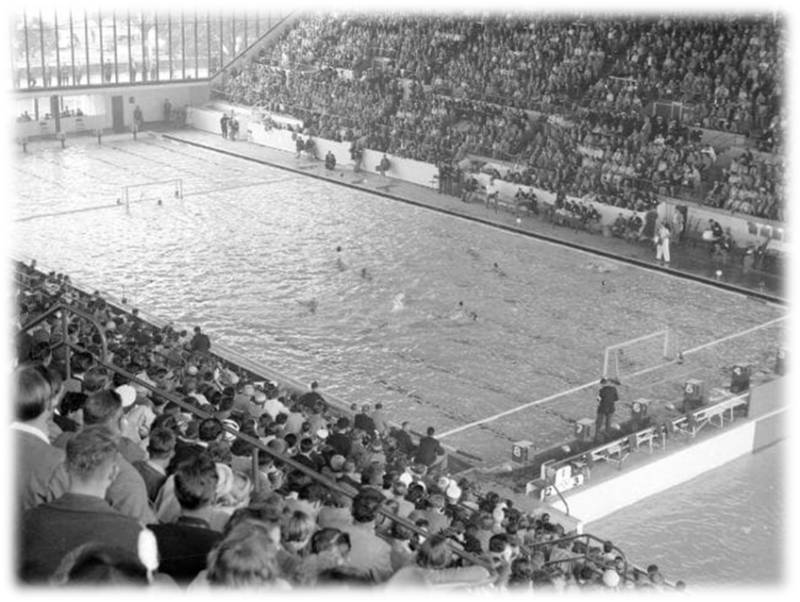
Water polo pool in Melbourne Olympic Park, 1956.
From the very beginning of the tournament the Hungarian team was cheered on by the fans watching the games. The Magyars were defending the gold medal they won four years earlier. After the draw, they were placed in group B, where they conclusively overcame the United States and the United Kingdom. In the next match, they smashed the Italians and the game against the USSR was to decide who would qualify for the finals. Due to the prevailing political situation, the meeting was not only of a sporting nature, but was a retaliation for the military attack by the Soviets. After the game, one of his heroes, Ervin Zádor said: "We felt that we were playing not only for ourselves, but for every Hungarian. This game was the only way we could resist them."
The decisive match started right at 3:25 p.m. local time. At that time there were strikes in Hungary and several people were killed the night before the game in Budapest. More than five and a half thousand fans, mainly Hungarian emigrants, gathered in the stands of the Olympic pool. They hung flags of their country with the communist emblem cut out and cheered their countrymen loudly, shouting "Hajrá Magyarok!" (Go Hungarians!). When Russians came to the ball, you could hear terrible whistling and booing. The match proceeded in a tense atmosphere and both sides were constantly provoking one other. There were physical clashes and it came to blows.
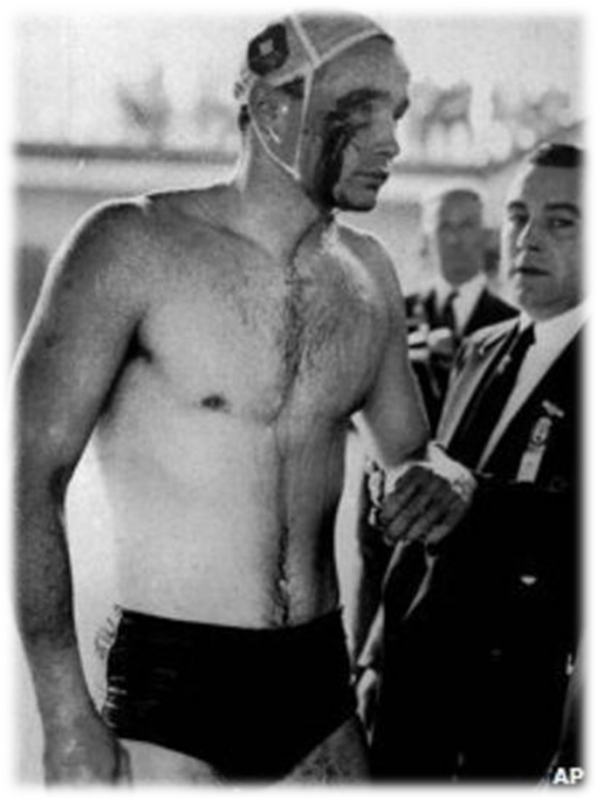
Ervin Zádor after being attacked
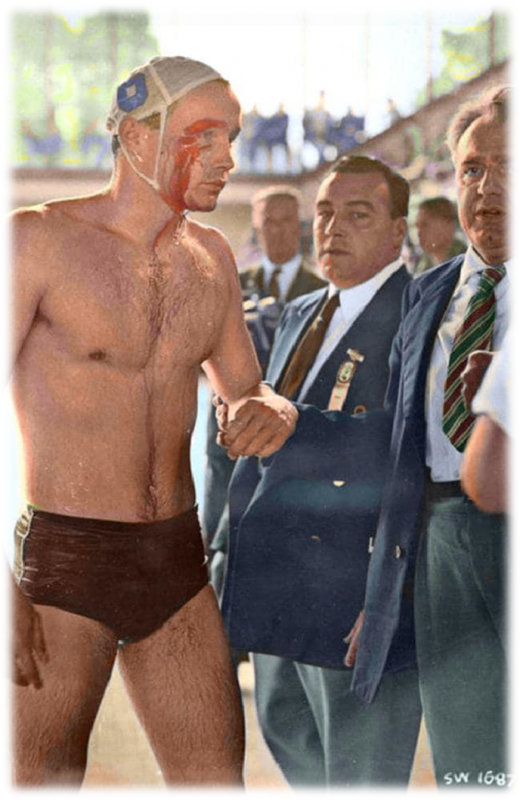
Ervin Zádor after being attacked (photograph with added colour)
The first goal for the Magyars was scored from a free throw by team captain Dezső Gyarmati. The goal was scored in controversial circumstances, as the rivals did not manage to set up a defensive wall. There was pushing and the referee sent Antal Bolvári and two Soviet players to the penalty zone. A few minutes later Ervin Zádor scored to make it a 2:0. György Kárpáti and Antal Bolvári put the ball in the net twice more. With a score of 4:0, the Russians were fuming. The match was becoming increasingly violent. Zádor, being near Valentin Prokopov, whom he knew from school, provoked him in Russian. Finally, Prokopov could take no more, and punched Zádor in the head. Deep cuts appeared on the victim's face, and blood began to flow from his brow into the water. The victim himself described the moment after the blow as such: "I saw about four thousand stars and felt warm blood pouring on my face. I thought, "oh, my God, i won't be able to play in the final!". A fight between the players broke out in the swimming pool, while the gathered fans started to jump over the barriers to lynch the Russians. Only the efficient intervention of the Australian police prevented a true lynching. The game was ended before time. The Hungarians went through to the final, where they defeated Yugoslavia 2:1 and won another Olympic gold medal. The injured Zádor was unable to play in the decisive meeting. "I tried everything to be able to play," he said, "but the doctors insisted I couldn't. Watching was an anguish - I was sure we would lose the Olympics because I wasn't there. So when we won, it was amazing".
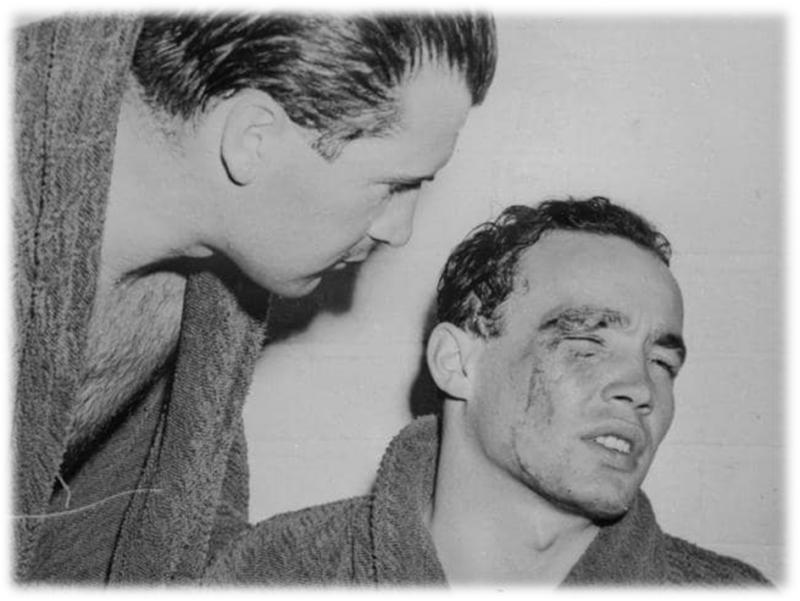
Injured Hungarian player after the USSR game
The events of the semi-final were widely publicised in the western press. This game started to be called 'blood in water' ("melbourne-i vérfürdő" in Hungary). Photos of the injured and bloody Zádor were aired on all television stations and published in world newspapers. In the Eastern Bloc, information about the incidents was hushed-up. In the Polish "Przeglad Sportowy", which reported accurately on the events of the Games, there was not even a mention of that game. After the Olympics most of the Hungarian athletes did not return to their country. Some of them stayed in Australia, some emigrated to the USA. So did the most famous player, Ervin Zádor. Years down the line he would say: "When I was twenty-one years old, they used to talk about me as one of the best players in the world. So giving up the sport was an extremely important decision for me. However, I do not regret it. Freedom is like breathing." Zádor died on 29th April 2012 in the United States.
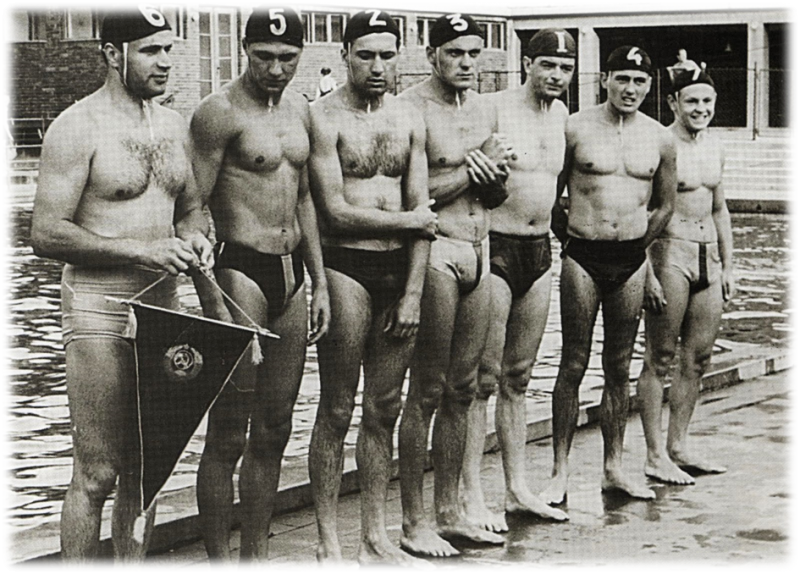
Winners of the gold medal at the 1956 Olympic Games in Melbourne. From the left: Szivos, Bolvari, Gyarmati, Hevesi, Jeney, Markovits, Karpati. The injured Zádor is not on the photograph.
On the fiftieth anniversary of the events in Melbourne, two films were made about them. The first is the Hungarian Children of Glory ("Szabadság, Szerelem"). The other was an American and Canadian documentary "Freedom’s Fury". Quentin Tarantino, who was its producer, described "Blood in water" as "the best untold story of all time".
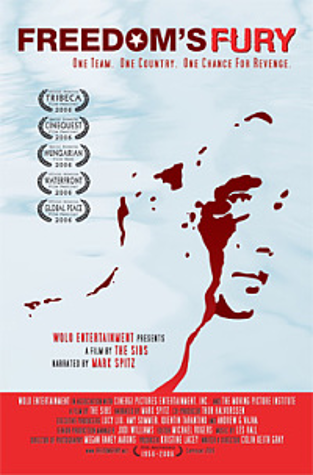
Poster for "Freedom's Fury".
During the XVI Summer Olympic Games in Melbourne, Hungarians won 26 medals, including 9 gold medals. They won a high fourth place in the total classification, giving way only to the Soviet Union, the USA and Australia. The Magyars never managed to repeat this feat. Four years ago in Rio de Janeiro they were classified in twelfth position (Poland was thirty-third).
The start of the XXXII Summer Olympic Games in Tokyo is scheduled for 24 July. The Hungarian team will be fighting for the tenth gold medal in the men's water polo discipline. Hajrá Magyarok!
Michał Kawęcki, born in 1987. Political scientist, founder and president of the Friends of Czarni Lwów the 1st Lviv Sports Club Association. Author of the oldest Polish football club monograph.
Sources:
Źródła:
https://www.vizipolo.hu/ - oficjalna strona węgierskiej piłki wodnej
http://www.vlv.hu/ - strona węgierskiej reprezentacji w piłkę wodną
http://www.waterpolo.hu/ - oficjalna strona Węgierskiego Stowarzyszenia Piłki Wodnej
Rozmiarek M. , Szabelski A. O węgierskiej krwi w wodzie, czyli konflikt Węgry – ZSRR a Letnie Igrzyska Olimpijskie w 1956 roku.
Nagy L. K., Igrzyska Olimpijskie 1956 roku w mediach węgierskich.
